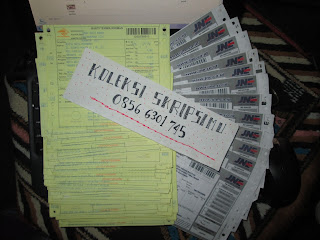organizational life
Select the one correct answer!
1. cell organelles that play a role in cell division events are ...
a. Golgi apparatus
b. centrosome
c. core
d. chromosomes.
2. which acts as a liaison between the cell nucleus with the cytoplasm is ...
a. endoplasmic reticulum
b. ribosomes
c. Mitochondrial
d. vacuoles.
3. living material of cells (organelles) that are not owned by the animal cell is ...
a. lysosomes
b. plastids
c. ribosomes
d. mitochondria.
4. plant cells form more permanent and stronger than the animal cells, it is possible because the plant cells have ...
a. vacuoles
b. Golgi apparatus
c. cell membrane
d. cell wall.
5. part of the plant cell that gives color to the role of fruit, flowers and leaves are ...
a. leukoplas
b. kromoplas
c. chloroplasts
d. plastids.
6. neural networks owned by animals play a role in ...
a. body protection
b. liaison between the organ to other organs
c. setting body activity
d. movement events.
7. plant tissues that are active in cell division ...
a. epidermal tissue
b. parenchymal tissue
c. amplifier network
d. meristem tissue.
8. transporting water from the bottom up is possible because of the ...
a. xylem tissue
b. phloem tissue
c. amplifier network
d. peristem network.
9. network that acts as an active motion is ...
a. bone tissue
b. muscle tissue
c. neural networks
d. connective tissue.
10. tissue is never found in the leaves is ...
a. epithelial tissue
b. transport network
c. parenchymal
d. epidermal tissue.
11. flowers play an important role in the events ...
a. pollination
b. Breeding
c. food establishment
d. storage of food reserves.
12. below is not a function of the root, that is ...
a. pengokoh plant body
b. absorbs water and mineral salts
c. embedding of a plant
d. the site of photosynthesis.
13. human organs that play a role in pumping blood is ...
a. kidney
b. heart
c. liver
d. stomach.
14. links below are found in the heart, but ...
a. neural networks
b. connective tissue
c. tissue blood
d. smooth muscle tissue.
15. human organs that belong to the sensing devices are ...
a. skin
b. kidney
c. intestine
d. teeth.
16. digestive organ that does not enter the food channel is ...
a. side
b. small intestine
c. pancreas
d. anus.
17. meristem tissue found in many areas ...
a. end of the stem and root ends
b. tip of the leaf and the stem end
c. end of the stem and the leaf tips
d. leaves, flowers and stems.
18. one organ to another organ will be obvious differences seen from ...
a. constituent networks
b. function
c. located
d. number.
19. ingress of oxygen into the body through the respiratory events, while the circulation of oxygen to all body tissues through the events ...
a. Breeding
b. digestion of food
c. transport
d. coordination.
20. order the appropriate level of organization of life is ...
a. tissue - organ - organism - organ systems - cell
b. organism - organ systems - cell - organ - tissue
c. cell - tissue - organ - organ system - organism
d. organ - organ system - organism - cell - tissue.
21. below is an example of living things that do not have a tissue, that is ...
a. amoeba
b. grasshopper
c. worms
d. lizards.
22. to observe the cells needed ...
a. loupe
b. microscope
c. telescope
d. shovel.
23. parts of cells that play a role in regulating the entry and exit of substances are ...
a. core
b. membrane
c. plasma
d. organelles.
24. not found in animal cells ...
a. lysosomes
b. chloroplasts
c. Mitochondrial
d. membrane.
25. substance dispensing system is also a system called ...
a. respiration
b. transpiration
c. excretion
d. circulation.
26. gizzard can be found at ...
a. human
b. seed-eating birds
c. frog
d. fish.
27. human reproductive organs that act as the growth of the embryo is ...
a. uterus
b. Ovarian
c. testis
d. vagina.
28. heart muscle was found in ...
a. heart
b. entire transport system
c. tools in
d. whole body.
29. meristem tissue found in many ...
a. root tip
b. end of the rod
c. cambium
d. all right.
30. networks that play a role in the events of photosynthesis is ...
a. pole network (palisade)
b. epidermal tissue
c. leaf
d. parenchymal tissue.













